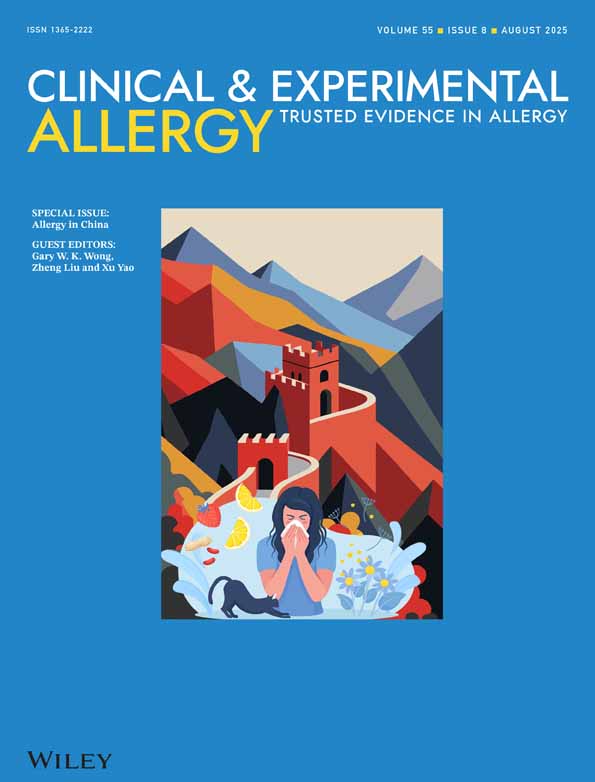The effect of specific immunotherapy on the expression of costimulatory molecules in late phase reaction of the skin in allergic patients
Summary
Background Specific immunotherapy (SIT) modulates immune responses to allergens resulting in improvement of allergic symptoms. However, the mechanisms behind the clinical changes are not clear. Participation of costimulatory molecules on antigen-presenting cells and T cells in the process of antigen recognition is suggested to be of essential importance. The SIT effect on expression of costimulatory molecules has not been earlier examined.
Methods Forty-one birch-allergic patients were treated with SIT or placebo. After 1 year of treatment skin biopsies were obtained 24 h following allergen challenge. Sections were stained with antibodies against: EG2 (eosinophils), CD4 (T cells), CD68 (macrophages), CD1a (Langerhans cells), CD28 (on T cells) and costimulatory molecules (CD80, CD86).
Results Following allergen challenge number of the CD4+ and CD68+ cells increased significantly (P=0.002, 0.0001, respectively) in the placebo, but not in the SIT-treated patients. The difference between groups was significant (P=0.003, 0.01, respectively). The numbers of EG2+ cells increased significantly in both groups. CD80+ cell numbers increased in the placebo (P=0.01) but not in the SIT group. The number of CD86+ cells increased in both groups (placebo, P=0.001; SIT, P=0.01) but significantly less in the SIT group (P=0.05). The numbers of CD28+ cells increased in the placebo (P=0.001) but remained unchanged in the SIT group. The difference between the groups was significant (P=0.05).
Conclusion There were lower numbers of cells expressing costimulatory molecules in SIT-treated than in placebo-treated patients. Decreased costimulation may lead to diminished immune response following allergen exposure. This could be an important factor contributing to the clinical improvement after SIT.




